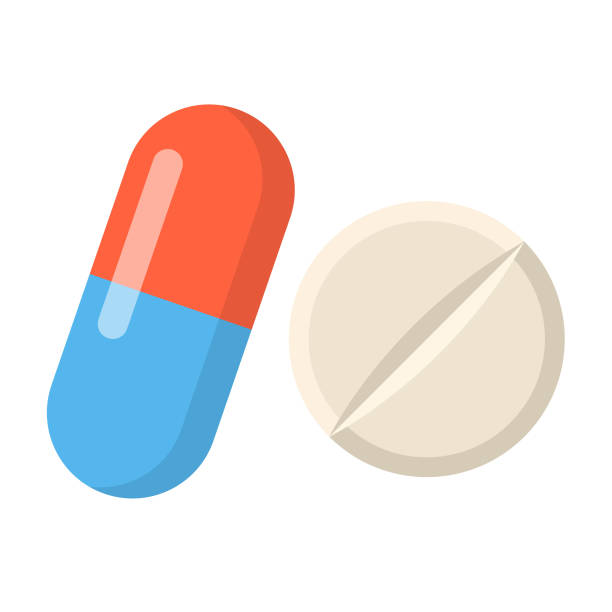Amisulpride
Indications
Amisulpride is indicated for the treatment of acute and chronic schizophrenic disorders, in which positive symptoms (such as delusions, hallucinations, thought disorders) and/or negative symptoms (such as blunted affect, emotional and social withdrawal) are prominent, including patients characterized by predominant negative symptoms.
Pharmacology
Amisulpride binds selectively to the human dopaminergic D2 and D3 receptor subtypes without any affinity for D1, D4 and D5 receptor subtypes. Unlike classical and atypical neuroleptics, amisulpride displays low affinity for serotonin, α- adrenergic, histamine receptor subtypes, muscarinic receptors and sigma sites. In the rodent, it preferentially blocks post synaptic D2 receptors located in the limbic structures as compared to those in the striatum as indicated by its reversal of d-amphetamineinduced hyperactivity without affecting stereotypies. In addition, it does not induce catalepsy and it does not produce D2 hypersensitivity after repeated treatment.
Moreover, it preferentially blocks pre-synaptic D2/D3 dopamine receptors, producing dopamine release responsible for its disinhibitory effects. This atypical pharmacological profile may explain amisulpride’s antipsychotic effect at higher doses through post-synaptic dopamine receptor blockade located in the limbic areas and its efficacy against negative symptoms, at lower doses, through presynaptic dopamine receptor blockade. In addition, the reduced tendency of amisulpride to produce extrapyramidal side effects may be related to its preferential limbic activity.
Dosage And Administration
For acute psychotic episodes, oral doses between 400 mg/d and 800 mg/d are recommended. In individual cases, the daily dose may be increased up to 1200 mg/d. Doses above 1200 mg/d have not been extensively evaluated for safety and therefore should not be used. Doses above 800 mg/d have not been shown to be superior to lower doses and may increase the incidence of adverse events. No specific titration is required when initiating the treatment with amisulpride.
Doses should be adjusted according to individual response. Doses should preferably be administered before meals. Amisulpride should be administered twice daily for doses above 400 mg. For patients with mixed positive and negative symptoms, doses should be adjusted to obtain optimal control of positive symptoms. Maintenance treatment should be established individually with the minimally effective dose. For patients characterized by predominant negative symptoms, oral doses between 50 mg/d and 300 mg/d are recommended. Doses should be adjusted individually.
Contraindications
Hypersensitivity to the active ingredient or to other ingredients of the product. Concomitant prolactin-dependent tumours e.g. pituitary gland prolactinomas and breast
cancer. Phaeochromocytoma. Children up to puberty. Lactation.
Pregnancy And Lactation
pregnancy Category C. The safety of amisulpride during human pregnancy has not been established, and therefore use of amisulpride is not recommended during pregnancy and in women of child bearing potential not using effective contraception, unless the benefits justify the potential risks and the administered dose and duration of treatment should be as low and as short as possible. Amisulpride has been found in the breast milk of treated women. Breast-feeding is contraindicated.
Precautions And Warnings
Neuroleptic Malignant Syndrome (NMS) is a potentially fatal syndrome that has been reported in association with anti psychotic medicines, including amisulpride. Neuroleptic malignant syndrome is characterised by hyperthermia, muscle rigidity, autonomic instability, and elevated CPK, may occur. In the event of any symptoms which could suggest NMS, in particular hyperthermia, particularly with high daily doses, all antipsychotic medicines including amisulpride should be discontinued. Amisulpride can lower the seizure threshold. Therefore patients with a history of seizures should be closely monitored during amisulpride therapy.
Therapeutic Class
Atypical neuroleptic drugs
Use in special populations
Elderly: Amisulpride should be used with particular caution because of a possible risk of hypotension or sedation.
Children: The efficacy and safety of amisulpride from puberty to the age of 18 years have not been established: there are limited data available on the use of amisulpride in adolescents in schizophrenia. Therefore, the use of amisulpride from puberty to the age of 18 years is not recommended. In children up to puberty, the use of amisulpride is contraindicated
Use in hepatic impairment: The impact of hepatic impairment on hepatic metabolism and hepato-biliary excretion of amisulpride has not been studied. Amisulpride should be used with caution in patients with moderate or severe hepatic impairment.
Use in renal impairment: Amisulpride is eliminated by the renal route. In cases of renal insufficiency, the dose should be decreased and intermittent treatment should be considered
Storage Conditions
Keep below 30°C temperature, away from light & moisture. Keep out of the reach of children.

